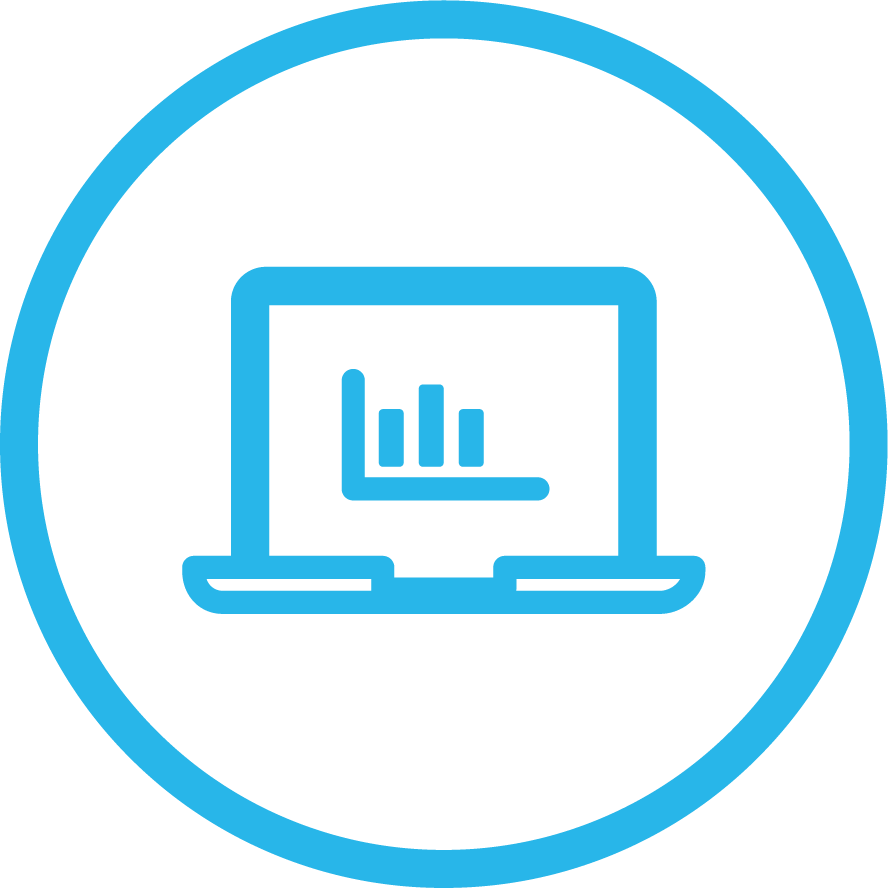PROCESS
SUCCESS DEMANDS COLLABORATION
Strategy is key, but execution is critical in the data economy
GLOBAL RESEARCH RESULTS
LEARN HOW TO BECOME A DATA-FORWARD BUSINESS
When it comes to managing data, process is (almost) everything. An organization is unlikely to succeed in the data economy without it. And getting your process right, and therefore your execution, rests on three things:
ALIGNMENT
of data strategy objectives across the organization
GOVERNANCE
of data, as well as its uses and the outcomes to be delivered
COLLABORATION
through data sharing, internally and externally
PROCESS: ONE OF THREE KEYS TO DATA ECONOMY LEADERSHIP
PEOPLE
The human touch, and the required skills
PROCESS
How teams are enabled and aligned to drive innovation with data

TECHNOLOGY
The infrastructure that supports your data economy strategy
In our survey of 1,000 senior business, technology, and data managers, we identified a small group of organizations we call the Data Economy Leaders. They outperform other organizations—sometimes by a large margin—in each of the three process attributes: alignment, governance, and collaboration.
“We can share and access data across all business units.”
Data Economy Leaders
Data Economy Laggards
How are Data Economy Leaders doing so well on process, and how can other organizations achieve similar success? Here, we find out how businesses can enable the data alignment, governance, and collaboration they need to thrive in the data economy.
ALIGNMENT
To make a data strategy work, organizations need to align on how they use data to drive the desired outcomes across every team.
“Data and analytics projects must always be driven by the business owners who have skin in the game in terms of prioritizing where we need to get value first,” said Ashok Chennuru, Chief Data & Insights Officer at health company Anthem, Inc. “If you get this alignment right, the returns you get from data will be huge.”
Data or analytics centers of excellence (COEs) are a useful way to drive alignment, and most of our surveyed organizations use them.
“We have a COE to help coordinate data policies across the organization.”
Data Economy Leaders
Overall
“Great COEs have a hub-and-spoke environment, where every department has data experts that are linked back to it—so there is continuous conversation going on,” said Bernard Marr, a business futurist and author of Data Strategy. “In some organizations these experts are called ‘data translators,’ and they bridge the gap between the data teams and the business teams, helping to identify the best opportunities around using data in each business area.”
Once you establish alignment via a well-functioning COE, you can enable and scale the processes that can make your enterprise a Data Economy Leader. For example, one crucial step would be to enable employees from across the enterprise to easily and securely access, integrate, and analyze the data they need from within and outside the enterprise.
The Data Economy Leaders achieve alignment through access
Share of respondents agreeing with statements about data processes
Base: 1,000 respondents overall (Data Economy Leaders = 63; Data Economy Laggards = 163)
Great COEs have a hub-and-spoke environment, where every department has data experts that are linked back to it—so there is continuous conversation going on. In some organizations these experts are called ‘data translators,’ and they bridge the gap between the data teams and the business teams, helping to identify the best opportunities around using data in each business area.
— BERNARD MARR,
Business Futurist and Author of Data Strategy

GOVERNANCE
Good governance ensures that an organization’s data is readily available, trackable, consistent, accurate, and secure—for appropriate use by authorized individuals or teams.
“An important tenet of our data strategy is to have standardized processes to ensure the consistency and quality of the data we collect,” said Bhaskar Peddhapati, Head of Global Platform Engineering at NielsenIQ. “Thus, we ensure that all our data assets are readily available and understood by everyone in the organization.”
So governance is important, because it coordinates processes throughout the entire data lifecycle. The governance approach should include, for example, the use of a data catalog that captures not just data but also the models used and the knowledge generated from them. Knowing what data you have, where it is located, and who is using it in different ways is key to becoming a Data Economy Leader and consistently adhering to industry and regional data security and privacy regulations.
“Our organization promotes clear data governance.”
Data Economy Leaders
Data Economy Laggards
“The CDO’s success depends on the company’s quality of data and whether it’s fit for purpose,” said Anita Lynch, Career Data Architect and CDO. “How the company collects data affects its ability to leverage it. Standardizing data taxonomies by sector and business model, and open sourcing them, is important for gaining that competitive advantage. A common reference architecture also reduces time and friction in hiring and onboarding new data talent, since we’re all doing very similar things in slightly different ways.”
How the company collects data affects its ability to leverage it. Standardizing data taxonomies by sector and business model, and open sourcing them, is important for gaining that competitive advantage. A common reference architecture also reduces time and friction in hiring and onboarding new data talent, since we’re all doing very similar things in slightly different ways.”
— ANITA LYNCH,
Career Data Architect and CDO

COLLABORATION
Collaborative data sharing—within the organization and with external partners—is one of the foundations of the data economy. Yet in some organizations legacy technologies and outdated mindsets get in the way.
The Data Economy Laggards struggle to share their data
Share of respondents agreeing with statements about their organization’s ability to share data
Base: 1,000 respondents overall (Data Economy Leaders = 63; Data Economy Laggards = 163)
* This statement was one of the criteria to be either a Data Economy Leader or a Data Economy Laggard
How can organizations get over these barriers?
Peddhapati said there remains “some resistance” in the consumer goods and retail industries to sharing internal data, particularly around costs and margins. To encourage more data sharing, his firm offers solutions that facilitate confidential access to the data.
Advanced data infrastructure can eliminate data silos and then enable modern data sharing. But there is also a cultural element: organizations need to foster a company culture that encourages collaboration through data sharing. And they need to show the real use cases and the results of such collaboration.
In healthcare, Anthem provides an example of the benefits of collaboration. “By combining our claims data with the medical records data we get from the physicians, as well as genomic data sets, pharmacy data, and other external data, we can build a whole-person view and, with the help of physician insights, predict how a disease will progress,” said Chennuru. “The physician caring for the patient can use the model to address the indicators and prevent disease progression.”
Alignment, governance, and collaboration are key attributes of the process pillar. Accomplishing all three will put you in a strong position to succeed in the data economy. But they are not enough on their own. You also need to make progress in our two other pillars of data economy leadership: people and technology.
THE BOTTOM LINE
Find out more about what it takes to be a leader in the data economy by downloading our ebook overview.